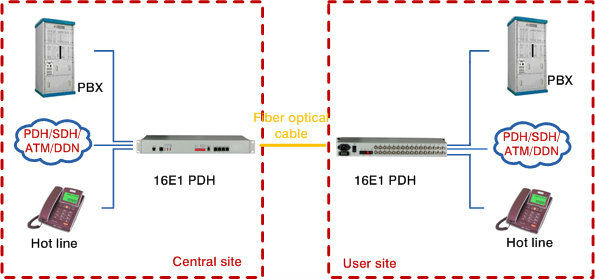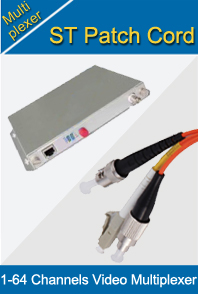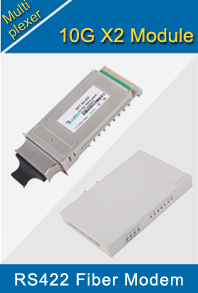-

- Sopto Home
-

- Special Topic
-

- Multiplexer Knowledge
-

- CWDM Technical Overview
Multiplexer Knowledge
- Why is Multiplexing Needed in Data Communication Systems?
- What is Concept of Multiplexing in Telephone System?
- What is Digital TV Frequency?
- Outlook of the WDM Networks
- DWDM Technical Overview
- CWDM Technical Overview
- How to Activate Cable Modems?
- How to Install a Fiber Optic Modem?
- How do I Choose a Best Fiber Modem?
SOPTO Special Topic
Certificate



Guarantee
Except products belongs to Bargain Shop section, all products are warranted by SOPTO only to purchasers for resale or for use in business or original equipment manufacturer, against defects in workmanship or materials under normal use (consumables, normal tear and wear excluded) for one year after date of purchase from SOPTO, unless otherwise stated...
Return Policies
Defective products will be accepted for exchange, at our discretion, within 14 days from receipt. Buyer might be requested to return the defective products to SOPTO for verification or authorized service location, as SOPTO designated, shipping costs prepaid. .....
Applications
Multiplexers can be used to connect PBX, Hot line and other devices of network from central site to user site through fiber optical cable.
SOPTO Products
- Fiber Optic Transceiver Module
- High Speed Cable
- Fiber Optical Cable
- Fiber Optical Patch Cords
- Splitter CWDM DWDM
- PON Solution
- FTTH Box ODF Closure
- PCI-E Network Card
- Network Cables
- Fiber Optical Adapter
- Fiber Optical Attenuator
- Fiber Media Converter
- PDH Multiplexers
- Protocol Converter
- Digital Video Multiplexer
- Fiber Optical Tools
- Compatible
Related Products
Performance Feature
High integration desig
Low power consumption
Good EMC, EMI
Stable and Reliable
Multiplexer Knowledge
Recommended


CWDM Technical Overview
CWDM is definitely an optical technology for transmitting as much as 16 channels, each in a separate wavelength or color, within the same fiber strand. The CWDM solutions help enable enterprises and repair providers to increase the bandwidth of an existing Gigabit Ethernet optical infrastructure without adding new fiber strands.
Unlike DWDM, which could transmit up to 160 channels on a single fiber by tightly packing them, CWDM technology relies on wider spacing between channels. This design makes CWDM a relatively inexpensive technology for transmitting multiple Gbps signals on a single fiber strand compared to DWDM because it supports less-sophisticated, and therefore cheaper, transceiver designs.
Within the point-to-point configuration shown within the figure below, two endpoints are directly connected through a fiber link. The ITU has standardized a 20-nm channel-spacing grid for use with CWDM, while using wavelengths between 1310 nm and 1610 nm. Most CWDM systems support eight channels in the 1470- to 1610-nm range.
.png)
CWDM Point to Point Configuration
The CWDM GBIC and CWDM SFP solutions allow organizations to include or drop as much as eight channels (Gigabit Ethernet or Fibre Channel) right into a pair of Single-Mode Fiber (SMF) strands. As a result, the need for additional fiber is minimized. You may create redundant point-to-point links with the addition of or dropping redundant channels right into a second set of SMF strands.
CWDM multiplexing is achieved through special passive glass devices known as filters. The filters act as prisms, directing lights from many incoming and outgoing fibers (client ports) to some common transmit and receive trunk port. Optical multiplexing inside a ring with CWDM networks is supported with OADM (Optical Add/Drop Multiplexer). OADMs can drop off one or more CWDM wavelengths in a specific location and replace that signal with one or more different outbound signals.
The CWDM solutions have two primary elements which are a set of eight different pluggable CWDM Transceiver modules, along with a set of different passive CWDM MUX/DeMUX or CWDM OADM modules. Both transceivers and the passive MUXes are compliant with the CWDM grid defined within the ITU-T G.694.2 standards.
CWDM may be used by enterprises on leased dark fiber to improve capacity (e.g., from 1 Gbps to 8 Gbps or 16 Gbps Fibre Channel) over metro-area distances. One problem with CWDM is that the wavelengths are not compatible with EDFA (Erbium-Doped Fiber Amplifier) technology, which amplifies all light signals inside their frequency range.
Note: EDFA technology is beginning to make repeaters obsolete. EDFA is a form of fiber optical amplification that transmits a light signal via a section of erbium-droped fiber and amplifies the signal with a laser pump diode. EDFA can be used in transmitter booster amplifiers, inline repeating amplifiers, and in receiver preamplifiers.
For more info, please browse our webite.




